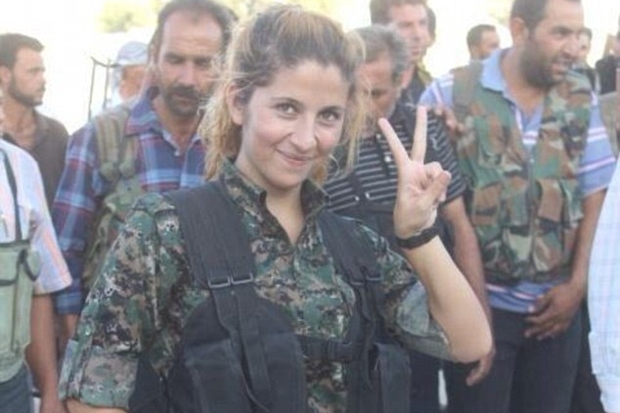‘News media representatives will be escorted at all times. Repeat, at all times.’ Fifteen years ago, US Central Command circulated Annex Foxtrot. Centcom had had its fingers burnt by the reporting of Vietnam, and it wasn’t going to make the same mistakes this time. The narrative of the Gulf war belonged to them. Today, the story couldn’t be any more different.
Psy-ops and social media: the butts of a thousand jokes, and there were plenty after the British Army announced the formation of a 1,500 strong ‘social media unit’. Reportedly named after the Chindits, the British guerrilla unit that operated far behind enemy lines in Burma during World War II, the 77th Brigade’s ‘unconventional’ methods will focus on the digital fronts that have opened up over the last decade or so.
The announcement that a unit focusing on social media was met by howls of derision in certain quarters. Would such a unit be equipped with the mandatory fix-wheel bikes and thick-rimmed glasses of social media ‘experts’?
The thing is, social media is a step ahead. Its army of users have already begun using social media in fighting their enemies and they aren’t part of any specialised unit.
The West was taken aback by the quality and volume of social media content coming out of Islamic State’s (Isis) advances in Syria and Iraq. The Hollywood of Jihad flickered across our phones, causing outrage. All the time, however, this was happening on the front line, too. Spare a thought for the resistance: the capture, torture and execution of their comrades is being beamed straight to them. In our work at the Centre for the Analysis of Social Media we found evidence of Isis fighters subverting hashtags that the Kurdish resistance used to communicate, using them to send photos of the fighters they had captured and killed. The same techniques were used in their early victories against the Iraqi army. Images of comrades who had been killed were sent across no man’s land. Perhaps the speed at which Iraqi units capitulated can in part be explained by this hand-to-hand propaganda.
The resistance was quick to respond. One of the stories of the conflict in 2014 was ‘Rehana’. A Kurdish fighter in the resistance, the image of the young woman became a symbol of the fight for Kobane after it spread like wildfire through social media. She came to be known as the ‘angel of Kobane’, and her image was used to bait Isis fighters. Kurds took great delight in sending the photo to Isis fighters, joking that were they to be killed at her hands they would be denied the rewards of martyrdom. Some three days later, Isis responded. A gruesome image of a jihadi holding the severed head of a woman was circulated: the angel of Kobane had been killed, they boasted. The resistance denied this (on social media, naturally).
And it isn’t just those on the ground who are shaping the conflict. Hunched behind a computer screen somewhere in Texas lurks @robfit. It pushes a right-wing rhetoric so extreme it almost parodies itself. In between climate-change denial, racism and support for the pro-gun lobby, the account is in perpetual celebration of the US army. The account is followed by almost 18,000 people, and was particularly prominent during the early days of Isis’s advances. In August last year, pro-Isis accounts mounted a social media campaign aimed at its American enemies. Over three days or so, the hashtag #AMessagefromISIStoUS hosted eighty-thousand messages. Those sent by pro-Isis accounts were full of grisly reminders of America’s ‘war on terror’: burning towers, wounded soldiers and coffins draped in the stars and stripes.
Within a few minutes, however, the hashtag was hijacked by pro-American users, including @robfit. Any Isis sympathisers following the hashtag would have been confronted with huge volumes of anti-Isis propaganda: the might of the American military, pornography aimed at upsetting devout Muslims, and in the end just about anything offensive they could find to throw at them.
This kind of crowd-sourced propaganda represents a new frontline in an age when many of us use social media to understand what’s happening around us. Pew Research estimates that half of those on social media platforms use it to find and read news. The very nature of the content, carefully curated by thousands of algorithms to show us stories we might relate to most, mean that expressing anti-Isis sentiment is likely to bring you into contact with more of the same. Never has propaganda been so widely sourced and distributed. One can only imagine the panic a 1991 Centcom official would have felt scrolling through an Isis Twitter feed.
The British Army is right to acknowledge the significance social media can play on the bloodiest of front lines. The narrative of war in this century will be shaped by the individuals fighting it. Facebook and Twitter have become powerful weapons, capable of inspiring and demoralising fighters. In the right hands, they might prove to be important tools in the much-maligned battle for ‘hearts and minds’. Through its channels, every fighter can document their fight, producing instant-speed, personalised and ‘realistic’ propaganda. For all the derision, social media is a battlefield: a fight over who gets to write the story of the conflict. It is fought over by millions of people every day. Recognising this is an important first step.
Alex Krasodomski is a researcher at the Centre for the Analysis of Social Media at Demos. He can be found tweeting @akrasodomski
You might also enjoy reading:






Comments